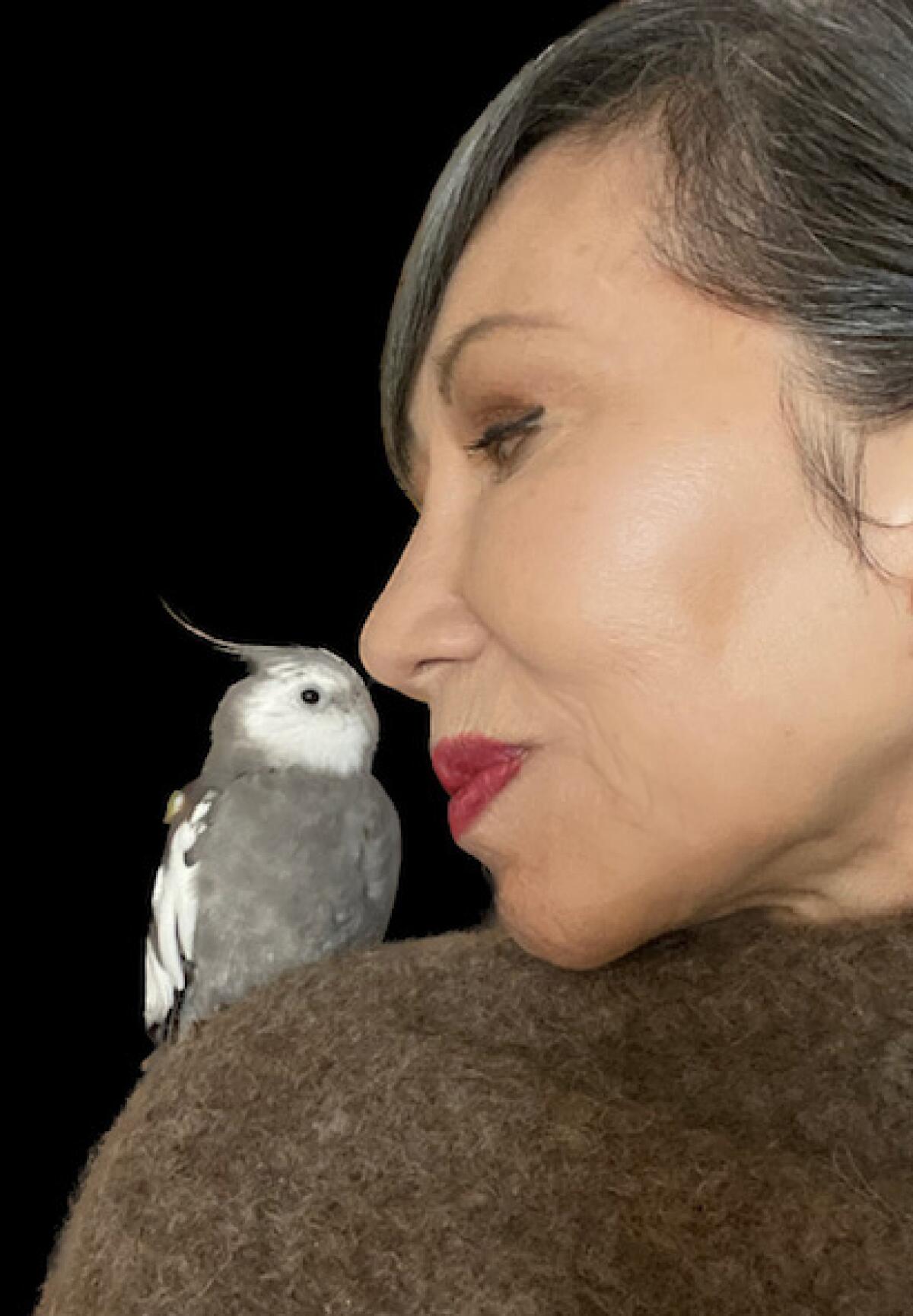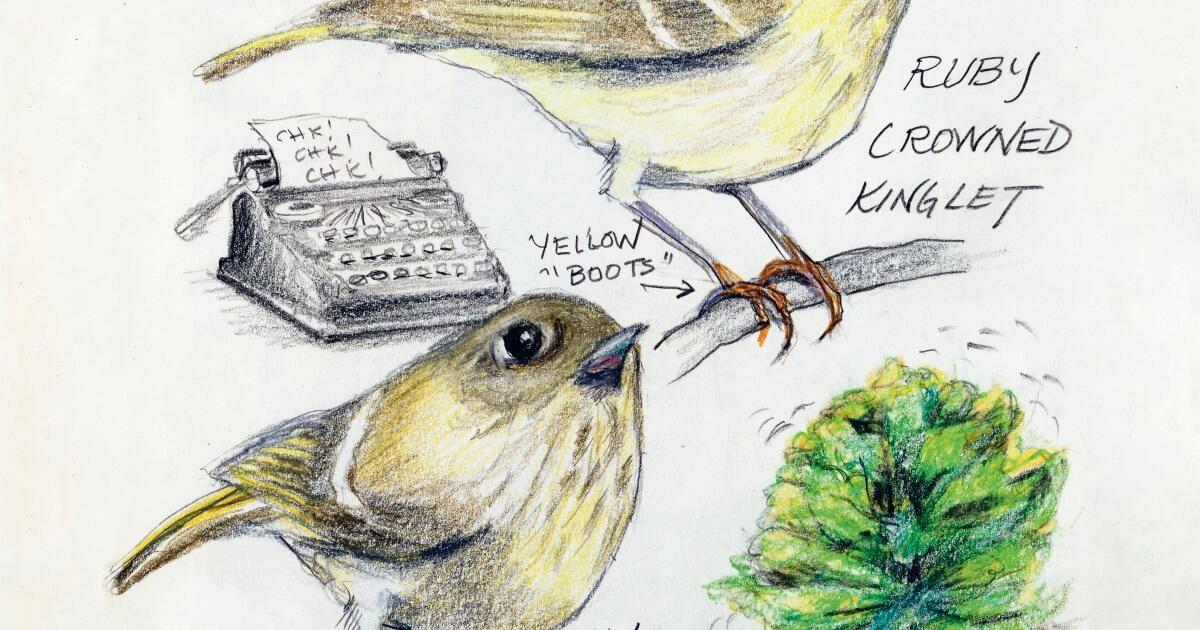Book Review
The Backyard Bird Chronicles
By Amy Tan
Knopf: 320 pages, $35
If you buy books linked to on our site, The Times may earn a commission from Bookshop.org, whose fees support independent bookstores.
Most birders have origin stories, the tales they tell about how birds, for whatever reason, moved from the background to the foreground in their lives. Novelist Amy Tan's journey, cataloged in her charming new nonfiction book “The Backyard Bird Chronicles,” began with a sketchbook and a pencil.
At the age of 64, he enrolled in a drawing class with naturalist John Muir Laws. She soon moved on to a nature journaling class, which prompted her to start closely watching birds in the backyard of her Marin County home. She set up feeders and then documented, with words and sketches, the avian life that came to the buffet.
And it became a buffet. As her interest (some would say obsession) grew, Tan found herself catering to the tastes of dozens of species. She provided sunflower seeds and nyjer for the seed eaters, suet for those who craved protein, sugar water for the hummingbirds, and sunflower chips for the ground feeders.
There were also mealworms, lots of mealworms, bought thousands at a time and kept in the refrigerator until needed. “I take too much pride in having the best food for wild bird guests,” he writes. “I would never serve dried worms instead of live ones! “That’s like giving your child frozen broccoli instead of fresh organic.”
Tan's observations of his avian guests, recorded in diary form, are both entertaining and informative. And the drawings that illustrate her reflections are notable. In both her quick sketches and her more finished works, she captures not only the appearance but also the behavior of the birds she draws: the aggressive stance of a golden-crowned sparrow defending the birdbath; the hunched bloat of a sick fox sparrow; the “yellow boots” and white eye ring of a wren crowned with rubies; the unexpected extension of the tongue of a Bewick's wren eating suet.
He often records some piece of avian drama in the style of a graphic novel, with a page titled with sketches and text documenting, for example, how a “hermit thrush goes rogue” or “food fights between juvenile jays.” The drawings are charming, the text fun.
That said, if you already know a lot about birds, you might be bothered that, at least initially, Tan isn't an expert. In one of his early diary entries, for example, he writes of his “palpitations with the excitement of spotting a species he had never seen before in my garden.” After making a quick sketch, he tries to identify the bird with the help of an app and decides (correctly) that it is a Townsend's Warbler.
Now, there's nothing wrong with getting excited about a Townsend. They are beautiful little warblers with vibrant yellow and black heads. But they regularly winter on the California coast, and you might be wondering why someone who couldn't identify such a common species at a quick glance decided to write a book about birds.
Stick with the book, however, and you will come to appreciate Tan's approach. Like early naturalists, Tan learns by observing, without preconceived ideas, and it is a pleasure to sit with her as she observes and accumulates knowledge. He takes careful notes, sketches what he sees and tries to draw conclusions.

Amy Tan and friend.
(Enmei Tan)
As David Allen Sibley says in his excellent introduction (which even on its own would make this book worth reading), “The drawings and essays in this book do much more than simply describe birds. They convey a sense of discovery…, suggest the layers of patterns in the natural world, and emphasize a deep personal connection between the observer and the observed.”
And Tan is well suited to be one of the observers. “My impulse to watch birds comes from the same impulse that led me to become a fiction writer,” she writes. “By disposition I am an observer. “I want to know why things happen.”
Their conclusions are often correct. She notes that when her garden goes silent, the reason is often that a Cooper's hawk or other predatory bird of prey has landed in one of her trees, and smaller birds are hoping to go unnoticed. She watches as the chicks follow their parents around the garden begging to be fed as if they were in the nest. She watches as California towhees drop worms from their feeders into a pot below so they can search for them on the ground the way they normally find food.
As he becomes better acquainted with avian life in his backyard, Tan also begins to notice abnormalities, including diseases among the birds. Three times, after detecting birds in the yard suffering from salmonellosis, conjunctivitis or fowlpox, she had to close the feeders until the risk passed to prevent the diseases from spreading. And she documents his birds' “distress at my window” upon finding the feeders empty.
Does that border on anthropomorphization? Of course. And Tan is unapologetic. “I am aware that I have committed the naturalistic sin of stereotyping Towhee as cheerful and Scrub Jay as scheming. Science would require that you be objective and not allow personal biases to obstruct more precise observations. Thank God I'm not a scientist. I love the cheerful Towhee and the clever, scheming Scrub Jay.”
And if some of Tan's conclusions don't stand up to scientific scrutiny, she offers fair warning. “Certainly no one should depend on me,” she warns. “What I like most are free guesses. That's my fictional side.”
However, don't expect the kind of elegant, carefully composed prose and structure that you find in an Amy Tan novel. That's not what she set out to do. “A novel is torment,” she explains. “It needs structure, care of language, constant configuration, refinement, splitting and cumulative knowledge.” By contrast, she says, this book “was pure fun, spontaneous, a little messy no matter what.”
It turns out that fun, messy spontaneity can make for a tremendously good book.
Sue Horton is an avid bird watcher and former Times opinion editor. She is working on her first novel.












